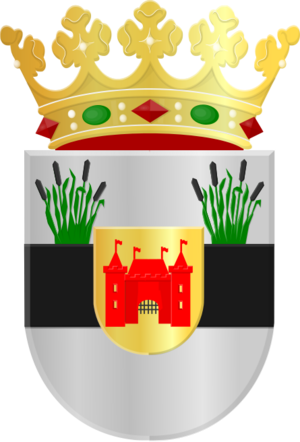Liesveld facts for kids
Liesveld was once a municipality in the Dutch province of South Holland. Think of a municipality like a local government area, similar to a county or a town in other countries. It had its own local council and mayor.
However, Liesveld doesn't exist as a separate municipality anymore. In 2013, it joined with other areas to form a new, larger municipality called Molenwaard. Then, in 2019, Molenwaard itself merged with another area to create an even bigger municipality called Molenlanden. So, Liesveld is now part of Molenlanden.
Contents
What is a Municipality?
A municipality is a local government area. It's like a town or a small region that has its own elected leaders. These leaders make decisions about local services.
What do Municipalities do?
Municipalities are responsible for many things that affect your daily life. They manage local roads, parks, and schools. They also handle things like waste collection and building permits.
They collect local taxes to pay for these services. The people who live in a municipality vote for their local representatives. These representatives then work together to improve their community.
Where Was Liesveld Located?
Liesveld was located in the western part of the Netherlands. It was in the South Holland province. This province is known for its beautiful flat landscapes.
The South Holland Province
South Holland is one of the most populated provinces in the Netherlands. It is famous for its windmills, canals, and polders. Polders are low-lying lands that have been reclaimed from the sea.
Liesveld was situated in a rural area of South Holland. This means it had many farms and open fields. It was a peaceful place with small villages.
Why do Municipalities Merge?
Sometimes, smaller municipalities decide to join together. This creates a larger municipality. There are several good reasons why this happens.
Benefits of Merging
One main reason for merging is to make local government more efficient. A larger municipality can often provide better services. They might have more resources and money.
Merging can also help save money. For example, instead of two small town halls, there might only need to be one larger one. This can reduce costs. It also allows for more specialized staff.
Another reason is to have a stronger voice. A larger municipality can represent its citizens better. It can also have more influence when dealing with the national government.
Life in Liesveld
Before it merged, Liesveld was a typical Dutch rural municipality. It was likely characterized by its natural beauty. The area would have had many waterways and green pastures.
Local Economy and Community
The economy in Liesveld would have been largely based on agriculture. Farming was a very important part of life. People might have grown crops or raised livestock.
The communities in Liesveld were probably close-knit. Everyone knew each other. Local events and traditions would have been important. Life would have been quieter than in big cities.
The landscape would have featured classic Dutch elements. You would have seen windmills and dikes. These structures are important for managing water levels in the low-lying Netherlands.
Liesveld's Legacy in Molenlanden
Even though Liesveld is no longer a separate municipality, its history lives on. It is now part of the larger Molenlanden municipality. This new entity carries forward the heritage of its former parts.
Molenlanden Today
Molenlanden continues to manage the areas that once belonged to Liesveld. It provides services to the residents there. The unique character of the villages from Liesveld is still preserved within Molenlanden.
The merger helps ensure that the region remains well-governed. It also helps it adapt to modern challenges. The history of Liesveld is now part of the bigger story of Molenlanden.



